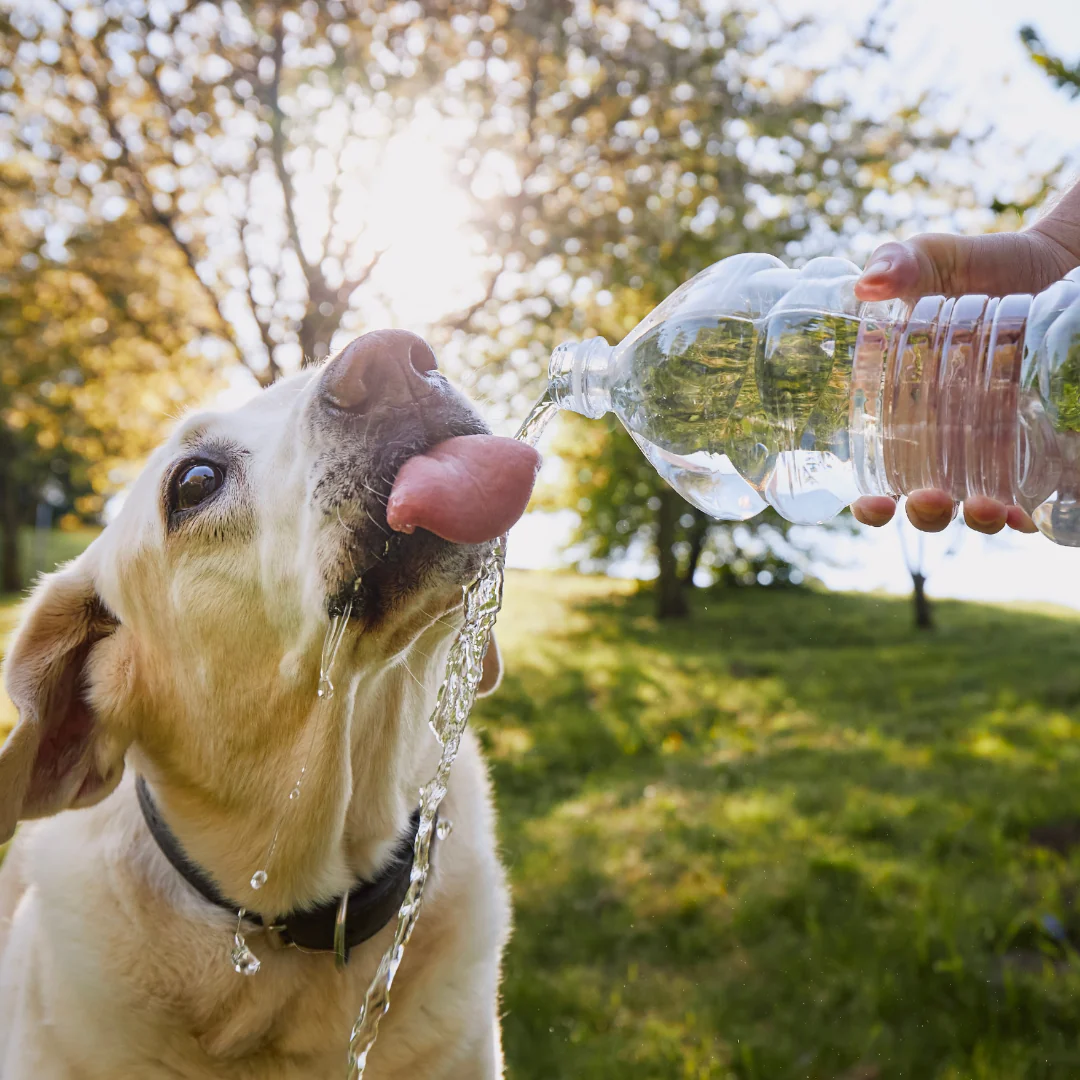🌡️ Why This Matters
In hot conditions, dogs can’t sweat like humans—they pant and use their paw pads, but these aren’t enough if temperatures climb. Heatstroke and dehydration can set in quickly, especially in brachycephalic, senior, overweight, or thick-coated breeds .
1. Limit Outdoor Time to Cool Hours
- Walk at dawn or dusk to avoid peak heat (10 a.m.–4 p.m.)
- Steer clear of the midday sun and intense exercise during the hottest hours .
2. Protect Their Paws
- Hot pavement quickly burns pads—if it’s too hot for your hand, skip it.
3. Keep Water Flowing
- Multiple water stations: Inside, outside, and easily accessible .
- Portable hydration gear: Collapsible bowls, pet water bottles—offer drinks every 15–20 minutes on walks .
- Add ice cubes/broth: Makes water appealing and keeps it cool longer .
4. Monitor for Dehydration & Heat Distress
Watch for warning signs:
- Dry gums, sunken eyes, sticky saliva .
- Thick saliva, lethargy, loss of skin elasticity .
- Heavy panting, drooling, viciously red gums, collapsing .
Seek veterinary care at the first sign of heatstroke—drastic symptoms can escalate rapidly .
5. Create Cool Zones
- Natural shade & shelters outdoors; fans or air conditioning indoors .
- Cooling mats, damp towels, shallow kiddie pools, sprinklers—offer fun and relief .
6. Use Cooling Gear
Invest in evaporative cooling vests, bandanas, mats—especially helpful for sensitive dogs. Re-wet them during activities ..
7. Don’t Leave Dogs in Cars
Temperatures can climb over 20 °F (11 °C) in minutes—even with windows cracked .
8. Freshen Their Food
- Avoid switching food during heat; it may upset digestion.
- Freeze meals mixed with water/veggies for cooling enrichment .
9. Groom Carefully
- Regular brushing prevents coat mats that trap heat.
- Don’t shave—coat protects skin and regulates temperature .
10. Understand Breed-Specific Risks
Be especially vigilant with:
- Flat-faced breeds
- Overweight, senior, or short-coated dogs
They’re at higher risk and need extra care .
✅ What To Do in Emergencies
- Move into shade or air-conditioned space.
- Dab with cool (not cold) water on neck, belly, paws—avoid ice baths .
- Offer small sips of water.
- Head to the vet immediately; heatstroke may cause hidden damage .
🔚 Final Takeaway
Hot weather demands vigilance—but with a few key precautions, you and your dog can stay safe and enjoy the summer together. Prioritize water, shade, smart timing, cooling tools, and emergency awareness to prevent overheating.



